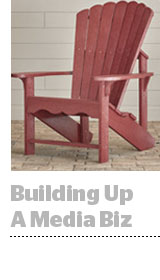 Home decor ecommerce site Wayfair is turning to its digital ad buying partner AppNexus to expand its media business.
Home decor ecommerce site Wayfair is turning to its digital ad buying partner AppNexus to expand its media business.
AppNexus will sell advertising across Wayfair’s ecommerce sites, which include Wayfair.com as well as Joss & Main, AllModern and DwellStudio. Using the same platform will make it easier to share data segments across Wayfair’s retail and publisher businesses.
For example, Wayfair targets its advertising and personalizes its site using segments like “pre-movers” or “expectant moms.” Those same segments will be available to companies advertising on Wayfair’s sites.
Those advertisers can also target Wayfair’s more than 30 million monthly customers across the web using audience extension. The first audience extension campaign went live last week. Wayfair’s marketing team manages these campaigns.
Bringing on a new tech platform was one of the many tasks former Apple and Microsoft media sales exec Frank Mulcahy took on when he joined in April as director of media solutions. He was hired to “shepherd them to more of a publisher model,” he said.
Mulcahy hopes AppNexus Publisher Suite will bring discipline to other aspects of Wayfair’s media business. Because the company originated as an ecommerce site, it didn’t used to have data about its ad inventory, Mulcahy said. So Wayfair will use AppNexus’ Yieldex tech to improve revenue forecasts and inventory management.
Wayfair also reorganized to set up the media business for success. Wayfair Media Solutions used to be a part of business development, but because Mulcahy now reports to the CMO, he can tap into the marketing team’s editorial calendar to sell against seasonal promotions.
Wayfair is investing in becoming a publisher for two main reasons: to generate an additional source of revenue due to small retail margins and because it plans to create more written and video content with a focus on recipes, DIY and home life. Its advertisers will be able to integrate themselves into that content natively and via standard display ads, Mulcahy said.
As Wayfair grows its media business, it expects its advertising mix to change. It currently sells about half its media to its suppliers and half to CPGs and others that want to access its core 25-to-54-year-old female audience.
Mulcahy expects to see advertising from nonsuppliers grow to 70% of revenue. A cable company or insurance company may want to access Wayfair’s “pre-mover” segment, for example. Direct sold deals will increase under this model, too.
Yet, commerce companies that sell media must protect their main source of revenue: sales. But Mulcahy said Wayfair approaches changes to its page layout or inventory by focusing on the user experience, not purely how advertising impacts sales. The key question is “Is this additive to the consumer experience?” he said. “Wayfair doesn’t need advertising,” he added. “It wants advertising.”












